| Fiat G.5 | |
|---|---|
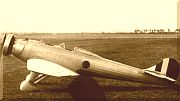 | |
| Role | Two-seat aerobatic tourer or trainer |
| National origin | Italy |
| Manufacturer | Fiat |
| First flight | 1933 |
The Fiat G.5 was an Italian two-seat aerobatic tourer or trainer designed and built by Fiat Aviazione in small numbers. [1]
| Fiat G.5 | |
|---|---|
 | |
| Role | Two-seat aerobatic tourer or trainer |
| National origin | Italy |
| Manufacturer | Fiat |
| First flight | 1933 |
The Fiat G.5 was an Italian two-seat aerobatic tourer or trainer designed and built by Fiat Aviazione in small numbers. [1]
Designed originally as a two-seat light aerobatic trainer the G.5 was a low-wing cantilever monoplane powered by a 135 hp (101 kW) Fiat A.70 radial piston engine. [1] It had fixed tailwheel landing gear and tandem open cockpits for the instructor and pupil. [1]
The type was built in small numbers and was followed by a prototype G.5/2 with an inverted inline 140 hp (104 kW) Fiat A.60. [1] A small number was also built of the final variant G.5bis which was fitted with a higher output 200 hp (149 kW) Fiat A.70 engine. [1]

Some aircraft were later modified to single-seat configuration. [1] One example of the G.5bis, registered I-BFFI, survived in civil ownership and operation until at least 1955 [2] and is now preserved in a museum.
Data from [1]
General characteristics
Performance

The Miles M.7 Nighthawk was a 1930s British training and communications monoplane designed by Miles Aircraft Limited.

The Mudry CAP 20 is a French family of aerobatic competition single seater monoplanes.

The Farman F.430 was a 1930s French light transport designed and built by the Farman Aviation Works. Two variants with different engines were known as the F.431 and F.432.

The Fairchild 22 Model C7 was an American two-seat touring or training monoplane designed and built by the Kreider-Reisner division of the Fairchild Aircraft Corporation at Hagerstown, Maryland.
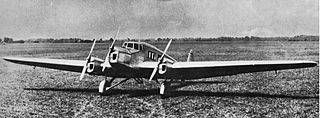
The Fiat G.2 was an Italian three-engine six-passenger monoplane transport aircraft designed by Giuseppe Gabrielli and built by Fiat.
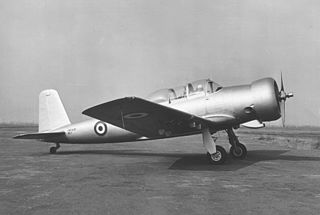
The Fiat G.49 was an Italian two-seat basic trainer designed by Giuseppe Gabrielli and built by Fiat.

The Nardi FN.305 was an Italian fighter trainer and liaison monoplane developed by the Fratelli Nardi company.
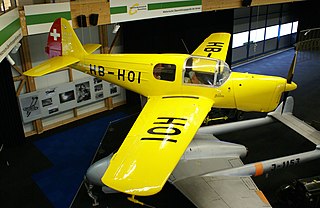
The Nord 1200 Norécrin is a French two or three-seat cabin monoplane designed and built by Nord Aviation.

The Romano R-82 was a two-seat intermediate and aerobatic trainer designed by Etienne Romano with production aircraft built by Chantiers aéronavals Étienne Romano.
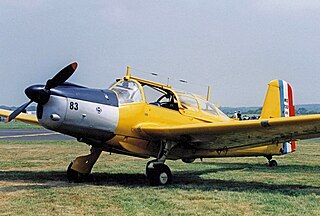
The Morane-Saulnier Alcyon is a two or three-seat basic training monoplane designed and built in France by Morane-Saulnier.

The Morane-Saulnier Vanneau is a two-seat basic trainer built in France by Morane-Saulnier and ordered by the French Air Force.
The Morane-Saulnier MS.560 was a French civil aerobatic monoplane designed and built by Morane-Saulnier.
The Moskalyev SAM-5 was a 1930s Soviet transport or air ambulance monoplane designed by Aleksandr Moskalyev. The type served in small numbers in the Second World War as an air ambulance.

The Bastianelli P.R.B was a 1920s Italian flying-boat, the first product of Societá Industriale l'Aviazone.
The Bréguet 890 Mercure was a late 1940s French cargo and passenger transport aircraft designed by Bréguet Aviation. Three variants were produced including a military variant called the Mars but none entered production.

The Magni Vale PM-3-4 was an Italian civil monoplane for use as a tourer or aerobatic trainer designed and built by Piero Magni-Aviazione in Milan.
The Yatsenko I-28 was a 1930s Soviet single-seat fighter designed by Vladmir Yatsenko and first flown in 1939. The I-28 was a low-wing cantilever monoplane of mixed construction powered by a 900 hp (671 kW) Tumansky M-87 radial piston engine. It had an enclosed single-seat cockpit with a rearwards sliding canopy. The wing had an inverted-gull shape to reduce the length of the retractable main landing legs. The prototype was destroyed shortly after the first flight but an order was placed for 30 production aircraft. Also ordered was a prototype of an attack version, the I-28Sh. Although the first five production aircraft were completed the programme was cancelled in early 1940.

The Caudron C.161 was a lightweight French two-seat biplane designed by Caudron for sport or flight training use. A conventional biplane with a square fuselage powered by a 65 hp (48 kW) Salmson radial engine. It had two cockpits in tandem with dual controls in both, when not used as a trainer the controls could be removed from the rear cockpit. A variant, the C.168, with a more powerful 70 hp (52 kW) Anzani radial engine was also available.

The CAMS 36 was a 1920s French flying boat designed and built by Chantiers Aéro-Maritimes de la Seine. It was originally conceived as a single-seat fighter but evolved as a racer to compete in the 1922 Schneider Trophy race. Lack of funds in 1922 and an accident in 1923 meant the two aircraft built failed to participate in a Schneider race.
The Morane-Saulnier MS-700 Pétrel was a French four-seat cabin-monoplane designed and built by Morane-Saulnier, only three prototypes were built.